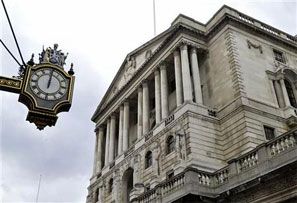Rush to offload bad loans indicates a revival in asset-sale market  Eighteen lenders, both state-run and private ones, have put Rs 21,060 crore (Rs 210.6 billion) worth of bad loans on the block in the first quarter of the financial year, indicating a revival in the asset-sale market.
Eighteen lenders, both state-run and private ones, have put Rs 21,060 crore (Rs 210.6 billion) worth of bad loans on the block in the first quarter of the financial year, indicating a revival in the asset-sale market.
The country's largest bank, State Bank of India (SBI), has identified Rs 4,288 crore of non-performing assets (NPAs) to be sold to asset reconstruction companies (ARCs), while Central Bank of India will sell Rs 3,047 crore (Rs 30.47 billion) and Bank of India Rs 2,492 crore (Rs 24.92 billion) worth of NPAs.
Apart from 15 public-sector lenders, private banks like ICICI Bank and Karur Vysya Bank are also planning to offload some of their bad loans to ARCs, though the value of the NPAs they are selling is much less than their public-sector peers.
Indian Overseas Bank (IOB) chairman & managing director M Narendra says, in some cases, there is a unanimous view among consortium members on NPA sale. "So offloading accounts to ARCs early in the year can increase chances for resolution management assistance, as well as financial support. There also is a new regime for detection and resolution of stressed cases by the Reserve Bank of India (RBI) which is making banks decide early." The Chennai-based lender has identified Rs 814 crore (Rs 8.14 billion) of NPAs for sale.
Possibly, this is after many years that NPA sale is being contemplated in the very first quarter of a financial year. Banks typically sell bad loans in the last quarter. However, since all banks rush to sell in the fourth quarter and are keen to complete the deals by March 31, there are chances they do not get the right price. Selling at the beginning of a year increases the possibility of fetching a good price. Indian
Indian
Last year, SBI had sold about Rs 3,000 crore (Rs 30 billion) of NPAs - a significant part of that went for security receipts and some smaller accounts were sold for cash. Banks have to make marked-to-market provisions for security receipts if the amount is not realised within three years.
The stressed-asset market, where deals were few and far between in the past three-four years, got a boost after the (RBI) relaxed the norms to help banks bring down NPAs.
The central bank allowed banks to reverse the excess provision on sale of NPAs if the sale was for a value higher than the net book value to P&L account in the year the amounts were received. Further, as an incentive for early NPA sale, banks were allowed to spread any shortfall (that is, if the sale value is lower than the net book value) over a period of two years.
"Sale of assets to ARCs, at a stage when these have good chance of revival and fair amount of realisable value for rehabilitation and reconstruction, is encouraged," the central bank had said in March in its revised guidelines permitting banks to sell standard assets as well. Until last year, lenders were allowed to sell only non-performing assets; the revised guidelines came into effect from this financial year.
With the economy stuck in the slow-growth lane for two years, the stress in the system has only multiplied and hit banks' asset quality. According to rating agency Icra, public-sector banks' gross NPAs grew to 4.4 per cent as on March 31 this year from 3.6 per cent last year. The agency expects these to remain between 4.4 per cent and 4.7 per cent at the end of March 2015.











 © 2025
© 2025